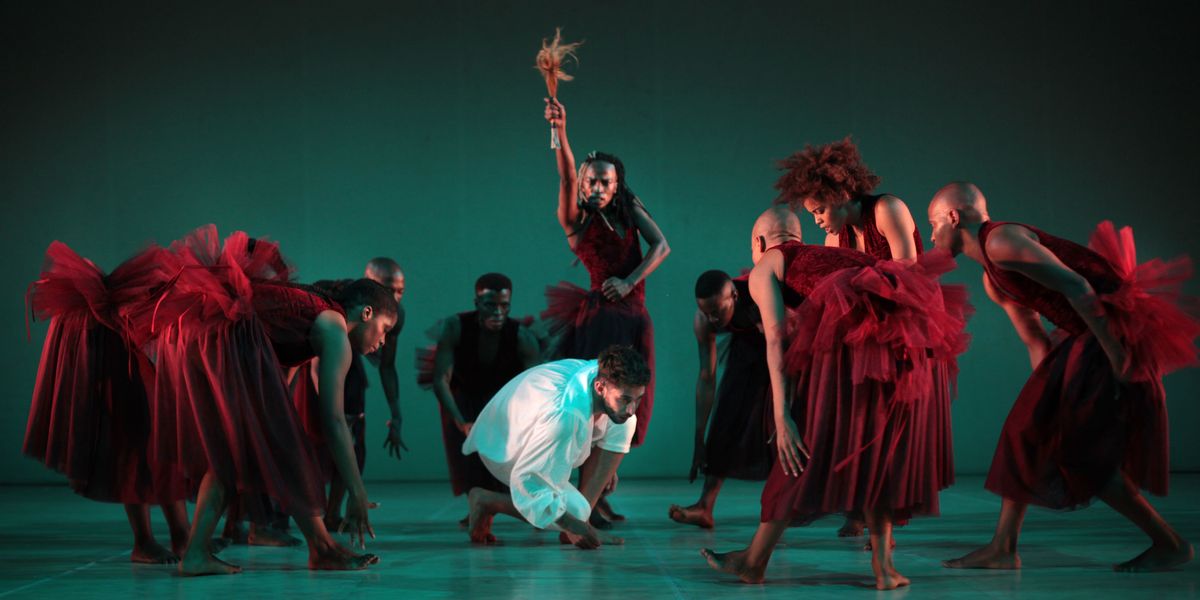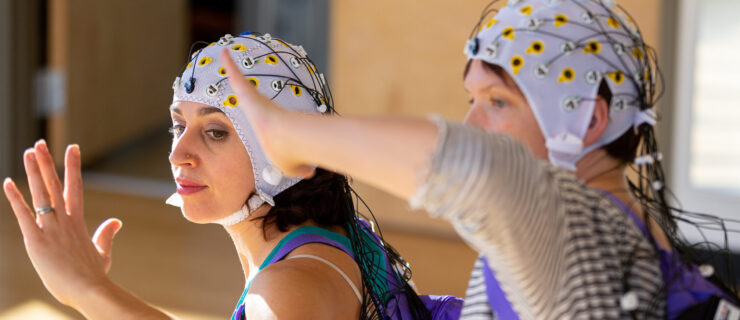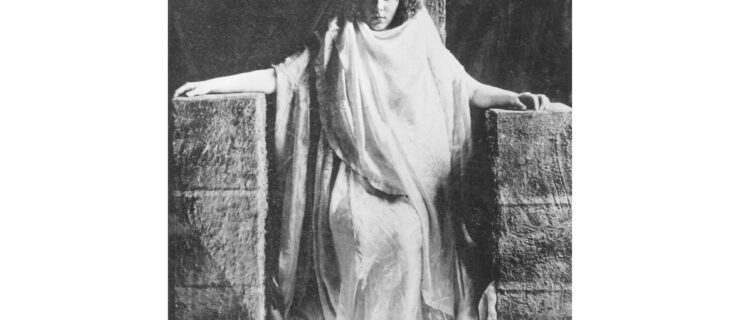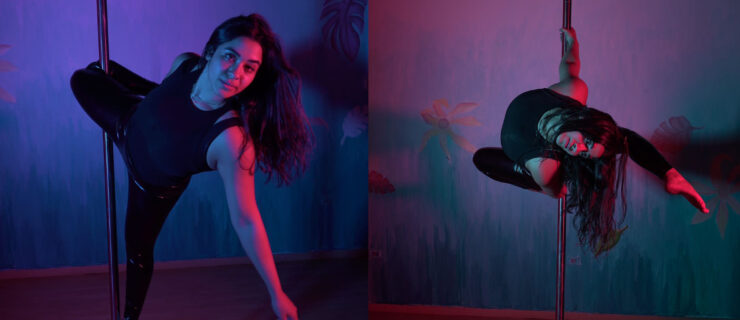Dada Masilo's Alternative Giselle Joins The #TimesUp Movement
After seeing Dada Masilo’s rendition of Giselle, I couldn’t help thinking, “If ballet did a version like this, it would transform not just the genre of the ‘story ballet,’ but, even more powerfully, the narrative of the “ballerina” itself.”
I was especially interested in Masilo’s Giselle after writing A Radical Reimagining of Ballet for 2018, which pondered how classical ballets could be modernized, and what effects that would have on leading ladies like Odette/Odile, Aurora and Juliet. Though Dada Masilo/the Dance Factory is not a ballet company, I thought her take on story might be an interesting place to begin to imagine.
Masilo’s Giselle (in which she dances the titular role) is not only radical, but timely: She has choreographed the #timesup version of the classic tale. It is bold, brazen, unapologetic and absolutely enrapturing. She has blown the dust off, and created fresh characters by injecting a new culture, a bit of humor and some haughtiness.
Here’s the caveat: To truly enjoy this version, you have to suspend what you think Giselle is supposed to be. This can prove a daunting task for avid bunhead classicists, which, truth be told, is what makes ballet so resistant to change.
Throughout her career, Masilo has consistently deconstructed classical ballets like Swan Lake and Romeo and Juliet, and in doing so refined the idea ownership of legacy ballets—European, heteronormative stories with protagonists who are victims of their gender, if human at all. She has stripped them of their genealogy, class, traditional social constructs, the pomp and circumstance, and gone back to the heart of the story: unrequited love.
Over the years there have been choreographers who have crafted gender-bending versions of story ballets, however Masilo, a black South African choreographer, not only reimagines this European classic by inverting gender roles (her Wilis are both men and women), but by changing the cultural lens through which we view the story. This version takes place in a South African village, her dancers are barefoot, and her Queen of the Wilis is a Sangoma, a traditional South African healer, danced androgynously by Llewelyn Mnguni.
Hers is not a weak, frail or vulnerable Giselle. From the onset, she has agency. She is swift and adroit; the precision of her movements reflect her clarity of mind. She does not so much “fall” in love with Albrecht (Xola Willie) as much “step” consciously into it. Hence it is not feminine folly or naiveté that make her a “victim” of betrayal, but rather the roguish mendacity of her lover.
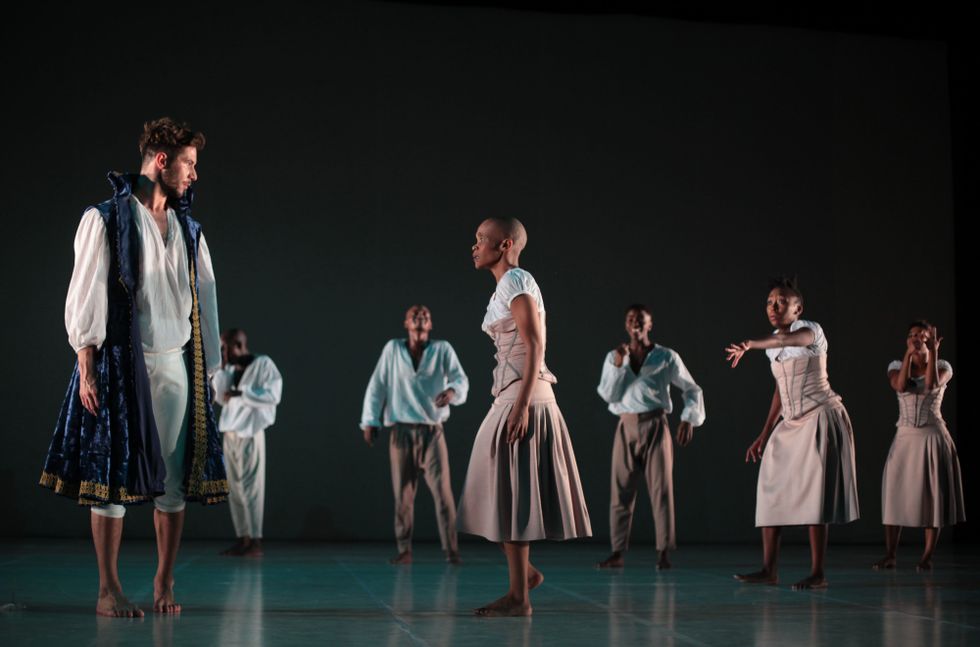
Masilo (center) as Giselle. Photo by John Hogg, courtesy Kornberg PR
Unlike her balletic counterpart, this Giselle literally has a voice. Throughout the production the dancers speak, chatter and audibly react, which creates a vibrancy and humor to the village that is only pantomimed in classical ballet. At one point, Masilo’s Giselle vocally rebuffs Hilarion’s romantic advances, shouting, “Leave me alone!” #metoo.
Because of her movement—an amalgam of ballet, African and contemporary dance—Masilo’s Giselle is inherently grounded in her body, strong and empowered. Noticeable are the intricate footwork and rhythms of African dance, full-bodied and gestural contemporary phrases, with sprinkles of classical vocabulary, all kneaded together with with an alchemistical adroitness.
In a ritualistic tradition, Giselle’s body is jarringly revealed by her mother, who removes her top (making reference to her small breasts) as she presents her to Hilarion, her would-be husband. In a wonderfully vulnerable duet, an unwilling and topless Giselle and Hilarion (Tshepo Zasekhaya) dance together as she tries to preserve her modesty. It is another #metoo moment: As uncomfortable as the scene is, with Hilarion aggressively pursuing Giselle in her state of undress, she defends her own honor, fighting him off, leaving both him and his flowers alone on the stage.
We are confronted with the nakedness of her body again when Giselle goes mad. What’s interesting, given our present time, is that even though Albrecht has deceived them all by pretending to be one of them, the villagers reserve their scorn and anger for the wrongly-seduced Giselle. Her nakedness creates a heightened level of vulnerability; the jeers of the community taunting her, and her own anguished shouting, are haunting. This is not the romantic, woeful death of her classical sister, but disturbing and heartbreaking.
Masilo truly flips the script in her second act: Her Wilis are not waifs, but warriors, vicious and vengeful. These #Timesup Wilis are pissed off, kicking ass and taking names.
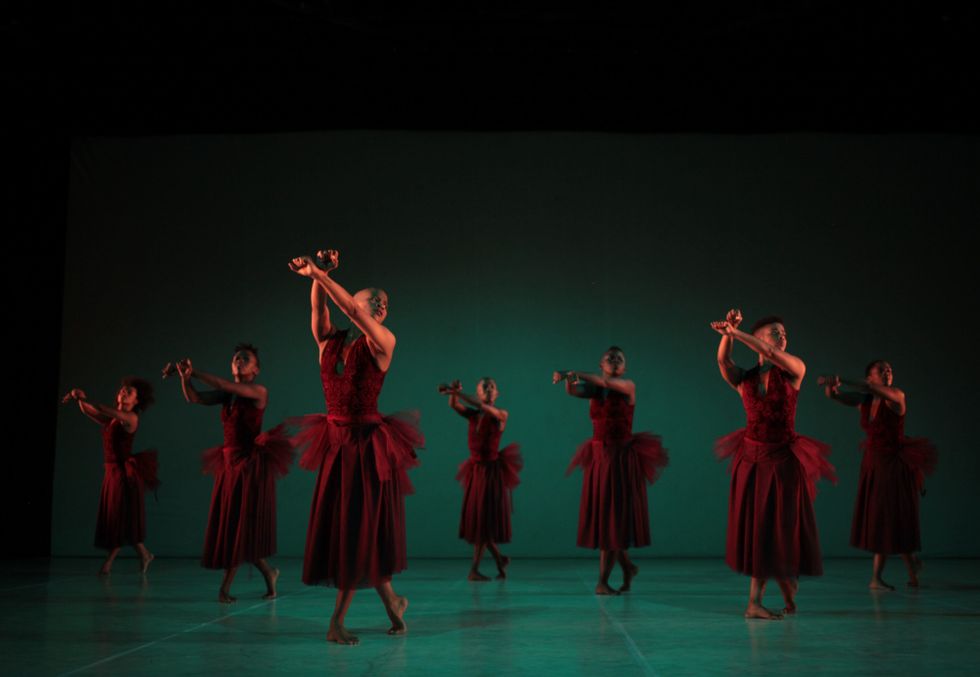
In Dada Masilo’s Giselle for The Dance Factory, the Wilis are vengeful. Photo by John Hogg, courtesy Kornberg PR
In the classic Giselle, I always see rows of sorrowful, pitiful creatures, crossed arms and bowed heads. Maslio inverts this too: Her Wilis’ arms are indeed crossed, but raised up behind their lifted, defiant heads. They are fierce and empowered. Albrecht is not left to dance himself to death, but Giselle beats him down with sickle-like switch. Every blow can be heard as the switch hits the floor. It’s exhilarating. I found myself thinking, “Well, that’s what the jerk deserves.”
Masilo proves that we need not sit in a theater for three hours to have these stories resonate. Nor are expensive, elaborate sets necessary to update a classic. An innovative approach to telling the story might just do the trick.
If ballet were courageous, and wanted a radical reimagining, it might start to look at its stories simply as human stories, tales that can look like anything we want them to, with characters that reflect who were are today.
The Dance Factory performs Masilo’s
Giselle at the Wallis Annenberg Center in Los Angeles on April 12, 13 and 14, and the Quick Center in Fairfield, Connecticut on April 18.
